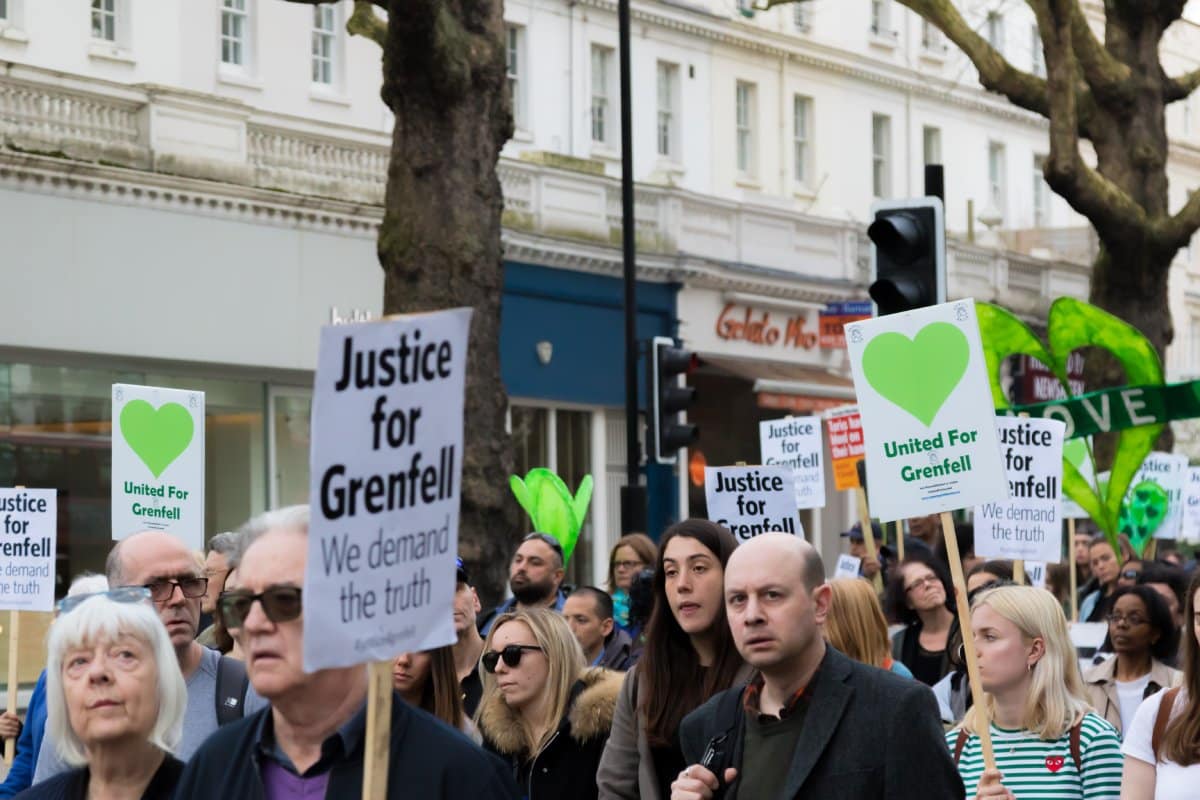Unveiling a disturbing and deadly reality, an analysis of government data exposes that over half of the residential blocks constructed by the company responsible for Grenfell Tower’s deadly cladding are plagued by “life-critical” fire safety issues. Here’s the full story.
“Life Critical” Safety Issues
Government figures recently analyzed by The Guardian newspaper reveal alarming statistics about the fire safety conditions in residential blocks constructed by the development arm of Rydon, the company responsible for installing the combustible cladding on Grenfell Tower.
The Grenfell Tower block burned down in 2017 with the loss of 74 lives. It stands as the most lethal structural fire in the United Kingdom since the 1988 Piper Alpha oil-platform disaster, marking the gravest residential fire in the UK since World War II.
Shockingly, more than half of the 25 residential blocks built by Rydon’s development arm have been found to have “life-critical” fire safety issues, as per data published by the Department of Levelling Up, Housing and Communities.
The Extent of the Issue
Out of the 25 blocks constructed by Rydon, 14 have been flagged for life-critical fire safety concerns. The implicit horror of this serious situation becomes even more apparent when considering that these buildings are just a fraction of the larger issue. The data suggests that major property development firms across England are accountable for over 1,325 buildings above 11 meters, all of which have been deemed unsafe.
The financial burden to rectify these safety issues is staggering, with an estimated total cost exceeding £2.7 billion. This equates to an average of slightly over £2 million per building. However, this is a relatively small cost when compared to the possible cost in human lives.
The remediation scheme, initiated by the government, involves developers taking responsibility for addressing life-critical fire safety issues in buildings taller than 11 meters erected in the last three decades.
Life-Critical Safety Issues
The dystopian and macabre term “life-critical” encompasses various fire safety concerns, primarily associated with flammable cladding on the exterior of buildings, the primary cause of the Grenfell Tower disaster.
However, it also includes issues related to fire-stopping measures in walls and fire compartmentation, which aims to restrict the spread of fire from room to room.
This measure is seen as critical, as in the Grenfell fire, fire doors failed to close properly, which aided in the spread of the deadly blaze.
Rydon, already infamous for its role in the Grenfell Tower tragedy, has assessed all 25 of its buildings, with 14 identified for remediation. However, as of the latest available data in November, only two of these buildings have undergone the necessary repairs.
The company, listed as Rydon Group Holdings in the remediation scheme, had joined the initiative six months later than most other developers, signing up in September last year, despite the clear danger to tenants of their buildings.
Insight From the Grenfell Inquiry
Evidence presented during the ongoing inquiry into the Grenfell fire reveals deeply concerning practices by Rydon. The company relied on subcontractors to verify the compliance of materials used, potentially contributing to the fatal outcome.
The inquiry, awaiting a final report, disclosed that Rydon took £126,000 in savings from switching to cheaper, more combustible cladding, which allowed the fire to climb the building faster, dooming those inside.
This comes to a total of just over £1,700 per fatality in the Grenfell fire, bringing the new renovation costs to the company into sharp relief.
Rydon recently made a £27 million provision in its accounts for a civil settlement with 900 individuals affected by the Grenfell fire.
This payout, reportedly totalling £150 million, underscores the severe legal and financial repercussions faced by the company due to its involvement in the needless and preventable injuries and deaths.
Industry-Wide Concerns
The serious and damning scale of the issue is evident in the remediation figures for all developers involved in the scheme. Of the 1,325 buildings requiring attention, only 19% have had work completed, leaving a staggering 65% with pending remediation.
Major players like Bellway and Taylor Wimpey are grappling with substantial bills and extensive inspection processes to identify buildings in need of urgent attention.
Many have pointed out this is a small price to pay when the alternative cost is counted in human lives.
Systemic Failings and Preventing Future Tragedies
The revelation that over half of the residential blocks built by the company responsible for the Grenfell cladding have life-critical fire safety issues is deeply troubling, a damning indictment of the scant regard the companies have for the safety of the tenants of their buildings.
It underscores the systemic failings in the construction industry regarding fire safety, particularly in the use of cladding materials. The financial burden to rectify these issues is substantial, and the slow pace of remediation raises serious concerns about the safety of residents in these buildings.
As the government and developers navigate the complexities of the remediation scheme, the urgency to address these issues and prevent future tragedies remains paramount so further lives are not needlessly lost to corporate greed and mismanagement.
More Articles Like This…
Broken Britain: 12 Reasons Behind the UK’s Decline
Say the Unsayable: 10 Occasions When Farage Spoke His Mind About Britain
The post Exposed: Extensive Fire Safety Failures in Residential Blocks with Grenfell Cladding first appeared on Edge Media.
Featured Image Credit: Shutterstock / Ben Gingell.
Grant Gallacher is a seasoned writer with expertise in politics and impactful daily news. His work, deeply rooted in addressing issues that resonate with a wide audience, showcases an unwavering commitment to bringing forth the stories that matter. He is also known for satirical writing and stand up comedy.

